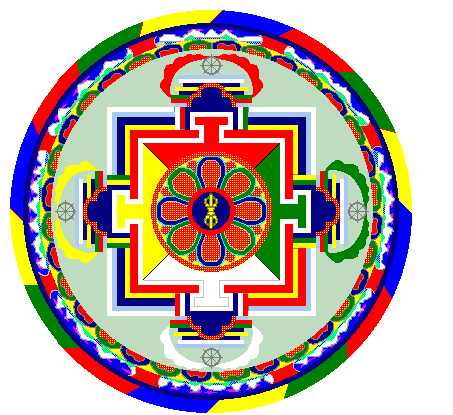
Now, graduate students and faculty at Cornell University
are bringing the three-dimensional palace of the mandala to life. Working with
Tibetan Buddhist monk, Pema Losang Chogyen, the team has created, on the
computer, a gorgeous geometric palace that blooms from a two-dimensional sand
mandala like a flower in a time-lapse film. "We write software that makes
synthetic images, enabling us to visualize how new buildings look before they
are build," explains senior research staff member James Ferwerda.
Toward that end, Ferwerda explains, "we model the
process of light reflection. We create a geometric model, then we study the
materials that go into the building, exactly the way physicists and chemists
analyze material. Then we simulate the way light reflects and refracts and is transferred
by these materials, and that's how we make an image." For instance, a
cornice of intricately sculptured gold glints as though struck by the sun,
jewels glow, and ornate silken banners hang heavy around the crown of the
palace.
To some, the realism is richly ironic since mandalas are
meant to depict the ultimate Buddhist truth that nothing has inherent
existence. But Chogyen believes the effort at Cornell may be the first of many
computer graphics projects to be undertaken with Buddhists.
Already the computer graphics department at Cornell has
established a scholarship for Tibetans. And to whet appetites for the rest of
us, the Cornell mandala is now even available on videotape from Snow Lion Publications of Ithaca,
New York.
PHOTO: Computer graphics of the mandala
Omni, Vol.16 No.11
May 1994,P.79
Copyright by Omni